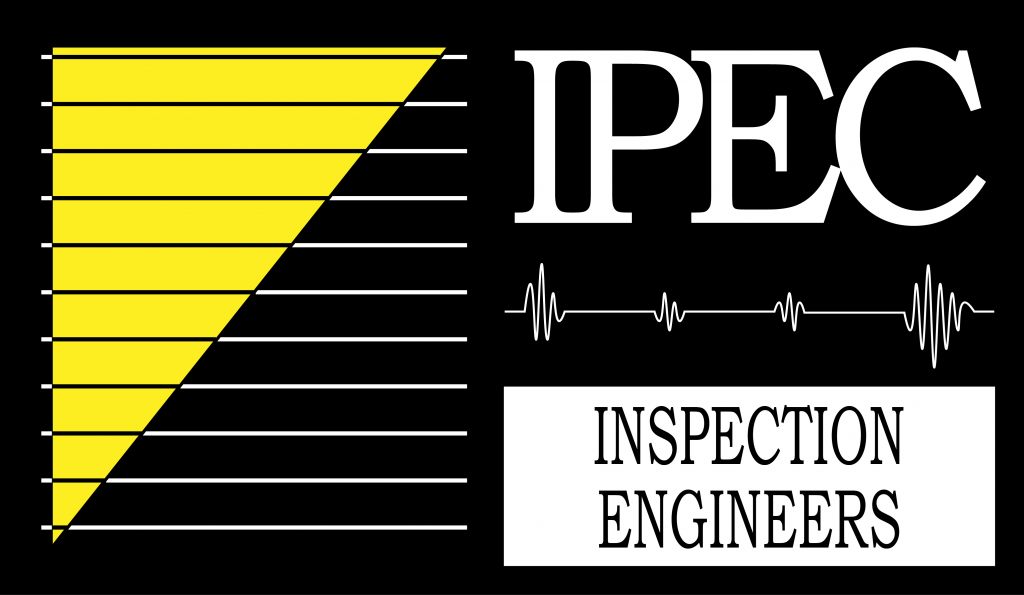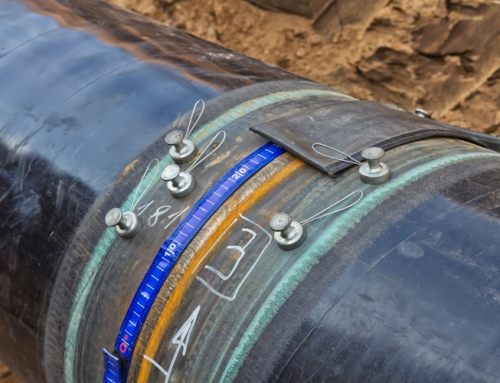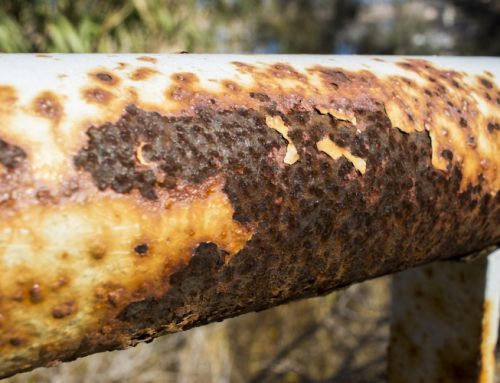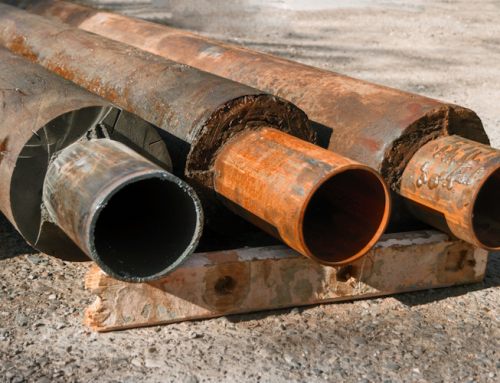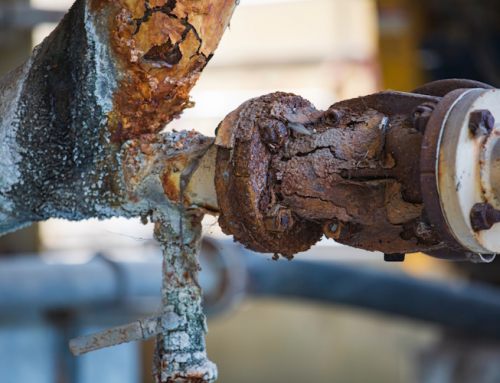Pipe wrap and holiday detection are two related techniques used in the maintenance and repair of pipelines.
Pipe wrap involves the application of a protective layer or wrapping around a pipe to prevent or repair leaks or corrosion. The wrapping material can be made of various materials, such as fiberglass, epoxy, or polyethylene, and is applied in multiple layers to form a strong, durable barrier that protects the pipe from damage.
Holiday detection, also known as spark testing, is a technique used to detect and locate defects or gaps in the protective coating of a pipeline. A holiday is an area where the coating is missing or has become damaged, leaving the pipe vulnerable to corrosion or other forms of damage. The holiday detection process involves using an electrical current to create a spark between the pipeline and a grounded probe. If a holiday is present, the current will flow through the gap and create a detectable spark.
By combining these two techniques, it is possible to repair a damaged pipe by applying a protective wrap and ensuring that there are no holidays or defects in the coating. This helps to extend the lifespan of the pipeline and prevent leaks or other types of damage.
Pipe wrap defects can occur during the application or use of the wrap, and can compromise the effectiveness of the protective barrier. Some common types of pipe wrap defects include:
- Wrinkles or Blisters: Wrinkles or blisters can occur if the wrap is not applied evenly or if the surface of the pipe is not properly prepared before application. These defects can create gaps or weak spots in the wrap, which can allow moisture or other contaminants to penetrate the protective layer and cause corrosion.
- Pinholes or Holidays: Pinholes or holidays can occur if the wrap is not applied tightly enough or if the surface of the pipe is not properly cleaned before application. These defects can create small gaps in the wrap, which can allow moisture or other contaminants to penetrate the protective layer and cause corrosion.
- Overlap Issues: Overlap issues can occur if the wrap is not applied with the correct amount of overlap or if the overlap is not properly sealed. This can create gaps or weak spots in the wrap, which can allow moisture or other contaminants to penetrate the protective layer and cause corrosion.
- Adhesion Problems: Adhesion problems can occur if the wrap is not properly bonded to the surface of the pipe or if the adhesive used is not suitable for the type of pipe or wrap material. This can cause the wrap to peel or delaminate, which can compromise the effectiveness of the protective barrier.
It is important to properly inspect and maintain pipe wrap to ensure that it is free of defects and providing adequate protection for the pipeline. This may involve regular inspections, repairs, or replacement of the wrap as needed.
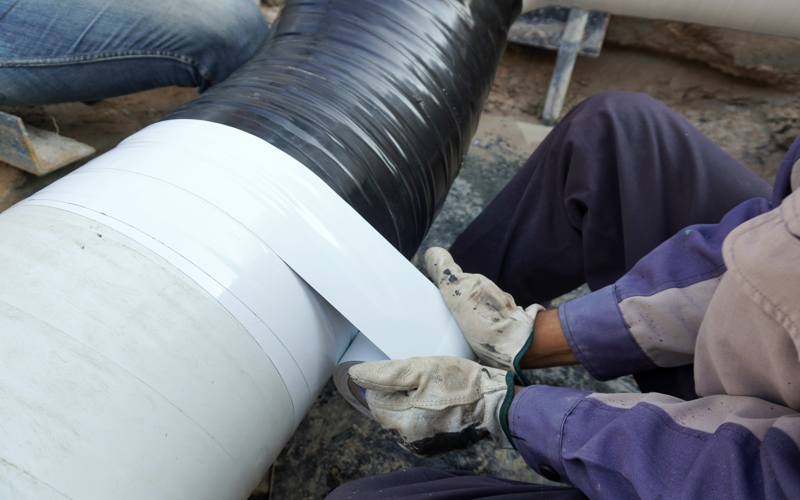
ASTM G62 is a Standard Test Method for Holiday Detection in Pipeline Coatings & is most widely used. There are two predominant test methods;
Method A
Method A is designed to detect holidays such as pinholes and voids in thin-film coatings from 0.025 mm in thickness using ordinary tap water and anapplied voltage of less than 100V dc. It is effective on films up to 0.508 mm (20 mils) thickness if a wetting agent is used with the water. It should be noted, however, that this method will not detect thin spots in the coating, even those as thin as 0.635 mm. This method will determine the existence of any gross faults in thin-film pipeline coatings. This may be considered to be a nondestructive test because of the relatively low voltage.
Method B
Method B is designed to detect holidays such as pinholes and voids in pipeline coatings; but because of the higher applied voltages, it can also be used to detect thin spots in the coating. This method can be used on any thickness of pipeline coating and utilizes applied voltages between 900 and 20,000V dc. It can also be used to verify minimum coating thicknesses as well as voids in quality control applications. This method is considered destructive because the high voltages involved generally destroy the coating at thin spots.
Apparatus
Low-Voltage Holiday Detector – A holiday detector tester having an electrical energy source of less than 100V dc, such as a battery; an exploring electrode having a cellulose sponge dampened with an electrically conductive liquid such as tap water; and an audio indicator to signal a defect in a high-electrical resistance coating on a metal substrate. A ground wire connects the detector with the low-resistance metal surface.
High-Voltage Holiday Detector – A holiday detector testerhaving an electrical energy source of 900 to 20,000V dc;an exploring electrode consisting of wire brush, coil-spring, orconductive silicon electrode capable of moving along thepipeline coating; and an audio indicator to signal a defect in ahigh-electrical resistance coating on a metal substrate. Aground wire connects the detector with the low-resistancemetal surface.
Peak or Crest Reading Voltmeter—A kilovoltmeter capableof detecting a single pulse and holding it long enough forthe meter circuits to indicate.
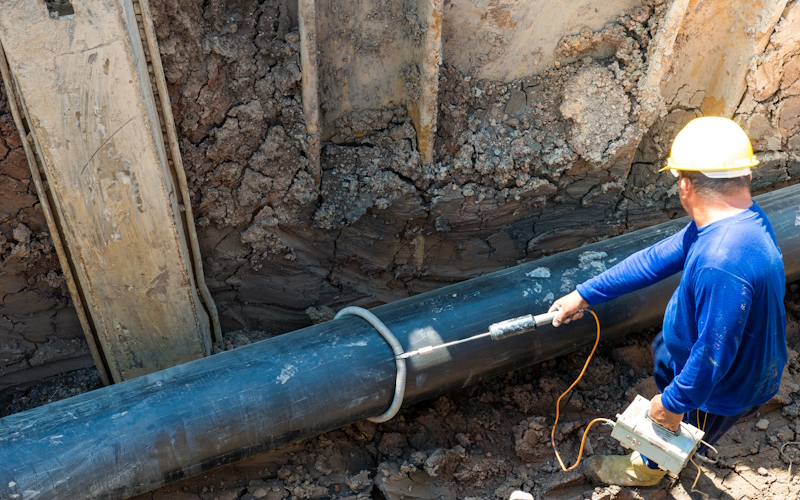
Author: James Murphy, Operations Manger of IPEC Inspection Ltd.
Source / Credit: ASTM G62

